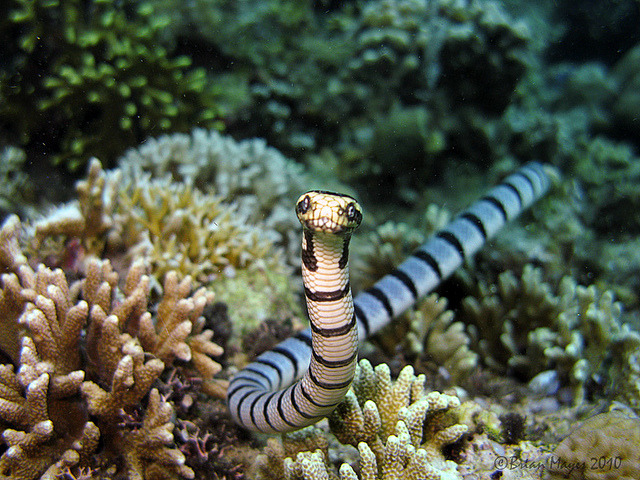One sea snake character that has been fairly well-preserved is Jormungandr, a feature of several Norse myths. Jormungandr is the child of the famous trickster Loki and the female giant Angrboda, along with Fenrir, a gigantic wolf, and Hel, the goddess of the underworld Niflheim. (How two apparently humanoid beings produced a giant snake and a giant wolf is not explained.) Odin, the Allfather, discovers Jormungandr as a small child and throws him into the sea. While living there, he grows so large that he can encircle the earth while still having room to bite his own tail. He is further described as having enormous fangs and dripping with venom.
A depiction of Jormungandr from a 17th century Icelandic manuscript. The drawing shows Jormungandr with arms and a dragon-like head, despite referring to him as a "serpent" in the text.
Jormungandr features in a few of Thor's adventures, usually as a foil to prove Thor's strength and bravery. The most popular depiction of Jormungandr shows Thor attempting to catch him and behead him, as in the drawing above. Most memorably, he is destined to battle Thor at Ragnarok, the end of the world. Thor will eventually succeed in beheading him, but Jormungandr will bite Thor, who in turn will collapse and die after taking nine steps. After the conclusion of the battle, Earth is destroyed, but a new, pristine Earth arises from the ashes. (A full translation of Jormungandr's origin can be read here, and an account of Ragnarok can be read here.)
Jormungandr's portrayal is interesting because it has links to both the negativity typical to Judaism and Christianity, while also being an example of ouroboros, the snake eating its own tail. Judaism's creation story includes a longtime feud between humans and Satan in the form of a snake; this parallels the story of Jormungandr and Thor's final battle, suggesting that the battle may have been a post-Christianization addition to the canon. On the other hand, the imagery of ouroboros is usually associated with cycles of destruction and rebirth. Pre-Christian Norse myth is deeply cyclical, and contains many motifs of rising from the ashes of destruction. The association between Jormungandr's death and the remaking of the world suggests that the ancient Norse did not view snakes in a negative light; rather, they associated them with rebirth after trials, and ultimately considered them positive symbols.
Hopefully, Jormungandr's real-life equivalent will not have cause to rise from the deep any time soon. In meantime, we can all be glad that actual sea snakes are not long enough to stretch around the world.
Pictured: probably not Jormungandr.


1 comment:
Fascinating parallels with other snake-symbols!
Post a Comment